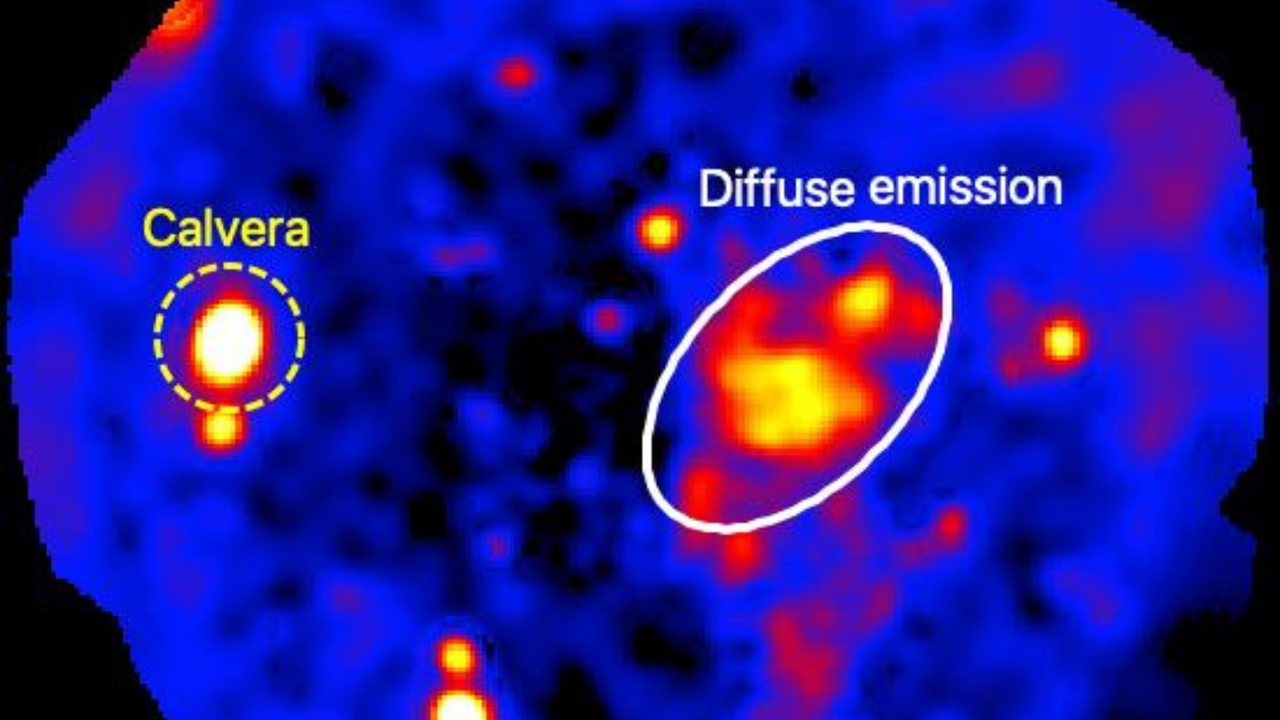Now Reading: Astronomers Spot Rare Pulsar Racing Through Empty Milky Way Region
-
01
Astronomers Spot Rare Pulsar Racing Through Empty Milky Way Region
Astronomers Spot Rare Pulsar Racing Through Empty Milky Way Region

Speedy Summary
- Astronomers have discovered a celestial system named “Calvera,” featuring a runaway pulsar connected to the remnants of a supernova explosion.
- Calvera is located around 6,500 light-years above the densely populated plane of the Milky Way, an area were stellar populations and massive stars are rare.
- The system’s finding challenges common assumptions about star formation and supernova occurrences being limited to dense regions in the galactic plane.
- Calvera was first observed in 2022 by LOFAR radio telescope as an extended circular structure identified as supernova wreckage. A connected pulsar emitting X-rays has been observed racing away from its explosion site.
- Analysis using X-ray data from ESA’s XMM-Newton spacecraft estimates that this explosion occurred 10,000-20,000 years ago, with Calvera situated 13,000-16,500 light-years from Earth.
- Findings suggest gamma-ray emissions-which usually require high-density particle environments-can also occur in low-density outer regions like those near Calvera due to interactions with local clumps formed by shockwaves from explosions.
Image Credits:
!Calvera celestial system
Images of Calvera containing runaway pulsar and supernova remnants.
!X-ray view
The strange system known as Calvera seen through X-rays.
Indian Opinion Analysis
The discovery of the “Calvera” system broadens understanding about stellar evolution and challenges long-standing theories surrounding massive star formation. This research underscores how even low-density areas on the periphery of galaxies can host significant astrophysical phenomena like supernovas and pulsars. For India-a growing contributor to space research-the study reaffirms why investment in space technology such as telescopes capable of multi-spectrum analysis holds promise for advancing astrophysics capabilities locally. It highlights how international collaborations (e.g., ESA-XMM missions) demonstrate scientific synergy that India could prioritize alongside missions like its own Chandra or Aditya-L1 programs.While distant cosmic discoveries may seem abstract compared to terrestrial priorities, they expand foundational knowledge about game-changing elements like gamma-ray emissions or unusual gravitational interactions-topics aligning well with India’s interest in high-energy physics. Future studies inspired by this case could help Indian scientists refine their expertise on pulsars or transgalactic phenomena.

























